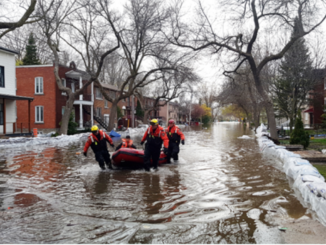
I have studied Geographic Information Systems (GIS) in both Canada and China. Last summer I completed my master in geography at University of Waterloo. In this article I will draw upon my experiences in China and Canada to say something interesting about both education systems. I hope you find it interesting.
Similarities Between China & Canada
The academic requirements for an undergraduate student to major in geomatics are quite similar in both countries. These requirements are related to the basics of geomatics.
Most candidates need to complete science courses such as mathematics and science in high-school to do well. Moreover, students with programming and software operating experience are highly valued.
In Canada, as in China, students are taught how to use GIS tools, and also others like remote sensing, cartography, GPS navigation, quantitative methods for analyzing data and making meaningful decisions. In many respects the two systems coincide.
Many universities in Canada and China are introducing GIS courses to students from other majors. In these courses, students are trained for one or more GIS modules useful for their fields but without the emphasis on theory. This is the case for obvious reasons, as students in environmental engineering may rely more on spatial analysis skills to find the toxic waste impact on a neighborhood, while hydrology students would require training for creating models to assess the impact of floods and the list goes on.
Based on my personal experience, master students have a personalized study plan in both countries. Besides learning GIS, they are taught programming skills in order to address the needs of specific problems. Lastly, after completing their research masters students become proficient in various disciplines such as cartography, spatial analysis, database management, and statistical analysis.
Differences Teaching & Learning GIS
As a fast-developing technology, GIS has a close relationship with other subjects, especially computer science and mathematics. At university in Canada, students who major in geomatics can freely choose courses from other fields in order to broaden their perspective and improve their skills. By contrast, many Chinese students have a fixed curriculum, where most of the courses are related to geography and surveying. Also, Chinese students are required to spend more time on courses that may not be directly related to geomatics (e.g. physics, chemistry, biology).
Post-graduate students in both Canada and China decide their project topics in their field of interests. One thing to note is Canadian students start exploring GIS by themselves at an earlier stage than the Chinese counterparts. A typical undergraduate GIS class in Canada includes lectures, lab exercises, as well as more assignments throughout the semester. Chinese students spend most of their time in class following a more formal and rote system of learning.
The relationship between instructor and student is quite different between the two countries. In China, instructor has the absolute authority and the students obey the rules and receive knowledge from them.
After class Chinese professors focus more on their research; so students find it hard to communicate with Chinese professors outside of the classroom.
By contrast, instructors in Canadian academic centers have more interaction with students. Instructors have office hours every week to answer questions from students while there are no regular office hours for Chinese university lecturers.
Something surprising to me was seeing Canadian students sometimes doubt and challenge professors on points of instruction during or after class. From my experience this would be rare in China.
It is hard to compare these two types of learning environments in Canada and China. As the culture and tradition of each country determines the way of teaching and learning.
Teaching Assistants
While I was a Teaching Assistant (TA) for undergraduate students in China, some friends of mine were TAs in Canada. This gave me the opportunity to discuss and compare teachings methodologies in both countries.
What I noticed was in Canada, tutorials for lab exercises were more detailed and created for the most part by the professor in charge. The task of a TA in Canada is to help students understand how to solve problems as part of the tutorials. In China the TA is responsible for creating tutorials and guiding students even without detailed help from the professor.

After Graduating: jobs
In China, students attend job fairs put on by industry or the schools in-order to help them find employment. I don’t find that that happens much in Canada.
Another difference that stood out to me is compared to Canadian companies, most Chinese companies put more focus on graduate’s educational background as more than half of the Chinese students do not have any professional experience.
After experiencing both systems of education my recommendation is Chinese universities implement a co-op program placement the same way that Canadian universities do. Chinese universities need to do a better job helping their students integrate into the work force.
When I started to looking for geomatics jobs in Toronto, I found that without any co-op experience, it would have been really difficult to get a job. Most companies are looking for candidates with professional geomatics experience. It’s a catch 22 as far as I can see.
So I believe if it is possible, every student major in geomatics should be involved in co-op programs in order to have a smooth connection between study and work.
In general, upon completing post-secondary education, geomatics graduates in both China and Canada have solid skills in multiple GIS related software and independent problem-solving. Both sets of graduates meet the basic need for entry-level geomatics jobs.
By contrast, the biggest difference between GIS education in Canada and China is in-class participation and overall tone. In Canada students are on more equal terms with the professor and have a back and forth. In China professors act as the last word in discussions and play a dominate role in the classroom.




Be the first to comment